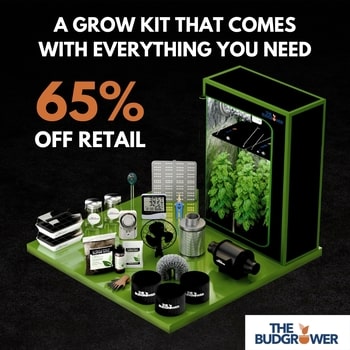Watering indoor plants can sometimes feel like walking a tightrope. One misstep and your lush green paradise might turn into a scene from a horticultural horror movie—either a desert of shriveled leaves or a swampy mess.
However, with the proper knowledge, you’ll soon be watering your indoor garden with confidence and grace.
Understanding Your Plant’s Watering Needs
Knowing Your Plants Is Half the Battle
Before we discuss the specifics of watering, it’s crucial to get to know the plants you’re dealing with. Like people, plants have different personalities—some are thirsty go-getters, while others are laid-back and prefer to take things slow.
Your job? To figure out which is which.
- Water-Loving Plants: If your plant has large, lush leaves or thick stems, it likely needs more water. These plants are the marathon runners of the plant world, constantly needing hydration.
- Water-Conserving Plants: Succulents and plants with fuzzy leaves are the camels of the plant kingdom. They store water for long periods and can tolerate drier conditions.
Understanding these characteristics will help you avoid the twin perils of overwatering and underwatering. Neither extreme is good—one leads to root rot, and the other to a plant that looks like it just spent a week in the Sahara.
Signs of Underwatering and Overwatering
Learning the Language of Leaves
Your plants can’t talk, but they sure know how to communicate. The trick is learning to read the signs they give you, especially when it comes to watering.
- Underwatering: Look out for wilting, yellowing leaves and stunted growth. Your plant is essentially waving a white flag, begging for a drink.
- Overwatering: If your plant’s leaves are dropping off or turning yellow, or if you notice a funky smell coming from the soil (hello, root rot!), you’ve probably been too generous with the watering can.
Watch for these signs to keep your plants happy and adjust your watering habits accordingly. Your plants will thank you for helping them grow strong and healthy.
Choosing the Right Watering Method
Not All Watering Techniques Are Created Equal
Watering plants isn’t as simple as splashing some water around. There are several methods, each with its own set of pros and cons.
Top Watering
Top watering is the most straightforward method—pouring water directly onto the soil until it drains from the bottom. This method works well for most plants, but be careful not to drown the roots.
Bottom Watering
Bottom watering involves placing your grow box in a water tray and letting the plants absorb moisture from the bottom up. This method is excellent for plants that don’t like wetting their leaves and helps ensure water reaches the roots.
Misting
Misting is best for plants that love humidity, like ferns and tropical species. A fine mist of water sprayed onto the leaves can mimic the humid conditions in which these plants thrive. Be careful not to rely on misting alone as your primary watering method—most plants still need their roots watered regularly.
So, which method should you use? It depends on your plant’s needs, the grow box you have, and your watering style. Experiment with different techniques and see what works best for your indoor garden.
Creating a Watering Schedule
Consistency Is Key
Plants thrive on consistency. Establishing a regular watering schedule will help you avoid the pitfalls of both overwatering and underwatering. But how do you know when to water?
- Research: Start by researching the specific watering needs of each plant species you’re growing. Some plants need watering once a week, while others might need a drink every few days.
- Environment: Factors like the size of your grow box, the type of soil, and the ambient humidity will all influence how often you need to water. If your grow box is in a dry room, you might need to water more frequently.
Once you’ve gathered this information, create a watering schedule and stick to it. It’s like setting an alarm clock for your plants—regular, timely watering will keep them happy and healthy.
Watering Techniques for Different Plant Types
One Size Does Not Fit All
Different types of plants have different watering needs. Here’s a quick guide to help you tailor your watering techniques to the plants in your indoor grow box.
Succulents and Cacti
Succulents and cacti are the zen masters of the plant world—they thrive on very little water. Let the soil dry out completely between waterings, and don’t be tempted to overwater. These plants prefer a deep, infrequent soak rather than a daily drizzle.
Leafy Greens
Leafy greens like lettuce, kale, and spinach are the thirsty athletes of the plant world. They need consistent moisture to grow well. Keep the soil evenly moist but not soggy. Watering these plants regularly will keep them crisp and vibrant.
Flowering Plants
Flowering plants such as orchids and roses are a bit more finicky. They need a delicate balance of moisture—too much or too little water can affect their ability to bloom. Water these plants when the top inch of soil feels dry, and avoid getting water on the flowers themselves to prevent damage.
Testing Soil Moisture Levels
Get Your Hands Dirty
Wondering if it’s time to water? The answer lies just below the surface. Testing soil moisture is the best way to determine if your plants need a drink. Here are a few methods you can use:
The Finger Test
This is the simplest method—sticking your finger into the soil to the first knuckle. If the soil feels dry, it’s time to water. If it’s still moist, wait a bit longer.
Moisture Meters
For a more precise reading, use a moisture meter. These handy tools can tell you exactly how much moisture is in the soil, taking the guesswork out of watering.
Weight Test
Another method is the weight test. Lift your grow box and see how heavy it feels. Dry soil is lighter than moist soil, so if your grow box feels light, it’s probably time to water.
Adjusting Watering Frequency
Plants Grow, and So Should Your Watering Routine
As your plants grow and the seasons change, you may need to adjust your watering frequency. Growing plants in an indoor grow box requires flexibility—you must adapt to your plants’ changing needs.
- Growth Stages: Young plants typically need more frequent watering, while mature plants often go longer between waterings.
- Environmental Changes: Changes in temperature and humidity can affect how quickly the soil dries out. In winter, for example, indoor heating can dry out the air, requiring more frequent watering.
Keep an eye on your plants and adjust your watering schedule as needed. Remember, consistency is essential, but so is adaptability.
Using the Right Watering Techniques
It’s All About the Technique
Now that you know when to water, let’s talk about how to water. The way you water your plants can make a big difference in their health and growth.
Water at the Base
Always water your plants at the base, aiming directly at the soil. This helps ensure that the water reaches the roots, where it’s needed most, and prevents the leaves from getting wet, which can lead to mold and disease.
Water in the Morning
Watering in the morning allows your plants to absorb moisture before the day’s heat sets in. This is especially important if your grow box is in a sunny spot, where the soil can dry out quickly.
Use Room Temperature Water
Cold water can shock plants, while hot water can damage their roots. Stick to room-temperature water to keep your plants happy.
Avoiding Common Watering Mistakes
Even Experts Get It Wrong Sometimes
No one’s perfect, and even the most experienced gardeners make mistakes. But you can avoid the most common watering blunders and keep your plants thriving by being aware of them.
Overwatering
Overwatering is the number one killer of indoor plants. It’s easy to do, especially if you’re trying to be a good plant parent. But remember, more water isn’t always better. Let the soil dry out between waterings to avoid drowning your plants.
Underwatering
On the flip side, underwatering can be just as harmful. If your plants aren’t getting enough water, they’ll wilt and lose their vibrant color. Make sure you’re providing enough water to keep the soil consistently moist.
Inconsistent Watering
Plants like routine, just like we do. Your plants might get stressed out if you’re all over the place with your watering schedule. Try to water at the same time every day (or week) to keep your plants happy and healthy.
Conclusion
Watering plants in indoor grow boxes is both an art and a science. By understanding your plants’ needs, choosing the proper watering methods, and avoiding common mistakes, you can ensure that your indoor garden thrives. Remember, consistency is vital, but so is flexibility. Keep an eye on your plants, adjust your watering routine as needed, and don’t fear getting your hands dirty.
Happy growing!
FAQs
How often should I water plants in an indoor grow box?
The watering frequency depends on the plant type, the size of the grow box, and environmental factors like temperature and humidity. Typically, it would help if you watered when the top inch of soil feels dry. However, some plants, like succulents, may need less frequent watering, while leafy greens might require more consistent moisture.
What is the best time to water plants in an indoor grow box?
The best time to water plants is in the morning. This allows plants to absorb moisture before the day heats up, reducing the risk of evaporation and ensuring that water reaches the roots where it’s needed most.
How can I tell if I’m overwatering my plants?
Overwatering signs include yellowing leaves, wilting despite moist soil, mold on the soil surface, and a foul smell indicating root rot. If you notice these symptoms, reduce the watering frequency and ensure your grow box has proper drainage.
What is the best watering method for plants in an indoor grow box?
The best watering method depends on the plant type and grow box setup. Top watering is common and effective for most plants, while bottom watering is ideal for plants that dislike wet foliage. Misting is suitable for humidity-loving plants but should be supplemented with root watering.
Why is room temperature water recommended for watering indoor plants?
Room temperature water is recommended because it prevents the plants from being shocked. Cold water can stress the roots, while hot water can damage them. Using water around the same temperature as your indoor environment helps maintain plant health.
Can inconsistent watering harm my plants?
Yes, inconsistent watering can stress plants, leading to issues like stunted growth, yellowing leaves, and poor overall health. Establishing a regular watering schedule and sticking to it helps ensure that your plants consistently receive the right amount of moisture.


















